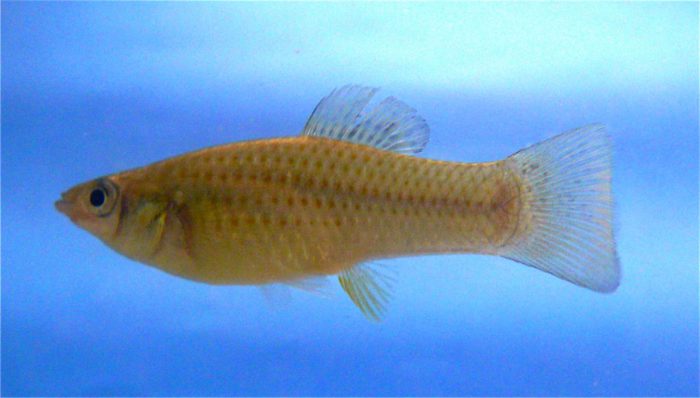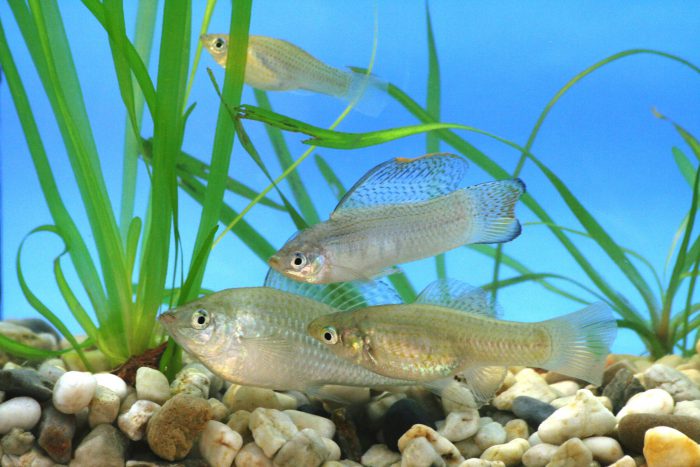So far, most modeks in sexual selection assume that female and male mate preferences for certain traits are genetically determined. However, there is increasing evidence that non-genetic factors like the social environment (public information) can have an eminent influence on mate-choice decisions. One mechanism of gaining public information from signalling interactions between conspecifics and occurs when informatiob from an animal transmitting a signal to another individual is picked up by one or more bystanders towards whom the signal was not directed.
One form of eavesdropping in the context of mate choice is mate-choice copying. Mate-choice copying occrs when an eavesdropper observes a sexual interaction between two heterosexual conspecifics. The eavesdropper might then copy the mate choice of others by preferring the same individual as a mate, or rejecting the same individual as the interacting individual did before. Particularly, mate-choice copying occurs when it is hard to choose between two mates (because of same size, colouring etc.).

The individual that eavesdrops on mate-choice decisions of others does not only gain information about the two interacting individuals, however, the presence of the eavesdropper when it has been detected (eavesdropper = audience) may influence the nature of the interaction. This is called ‘audience effect’. Hence, an eavesdropper does not always gain reliable information, because one or both of the two interacting individuals might be cheating each other during interaction dependent on the presence or absence of an eavesdropper.

The sailfin molly (Poecilia latipinna) and his close relatives, the Atlantic molly (Poecilia mexicana) and their natural hybrid, the Amazon molly (Poecilia formosa), are well suited to investigate mate-choice copying and audience effects. They are live-bearing Cyprinodontiformes (Poeciliidae) living in mixed-sexual groups. Thus, males and females are able to observe the mate choice and copulations of conspecifics.
Although many important studies regarding mate-choice copying and audience effect already exist, there are still fundamental aspects unknown. The aim of this project is to detect new, important and fundamental aspects of mate-choice copying and audience effects to understand the role of the social network for mate choice.
The sailfin molly (Poecilia latipinna)
Sailfin mollies (Poecilia latipinna) range from North Carolina along the Atlantic coast south to the Rio Tuxpan in northern Mexico and had been introduced to central Texas in the 1930s. They are often found in coastal brackish habitats and are very tolerant of varying temperatures and other abiotic conditions. Males (A) reach a maximum body length of about 10 cm and have an ornamented enlarged dorsal fin. Females (B) reach a maximum body length of about 12 cm and have a cryptic coloration.

The Atlantic molly (Poecilia mexicana)
Atlantic mollies (Poecilia mexicana) are widespread in freshwaters from the Rio san Fernando, Mexico, south to at least Honduras. Males (A) can become 7 cm, and because female growth does not stop after maturity, females (B) can become 9 cm in body length- While females have a cryptic coloration, males show a blue-orange colouring in the tail fin and the dorsal fin.

The Amazon molly (Poecilia formosa)
The Amazon molly (Poecilia formosa) is a natural hybrid of the Atlantic molly (P. mexicana) and the sailfin molly (P. latipinna) and was the first unisexual vertebrate detected. The hybrid origin was later confirmed using molecular methods, and currently P. mexicana is considered to be the maternal ancestor and P. latipinna the paternal ancestor. Amazon mollies depend on sperm from males of their ancestors (P. mexicana and P. latipinna), but P. formosa females typically produce unreduced eggs, are fully clonal, and use sperm only to trigger embryogenesis (gynogenesis). Amazon mollies occur in sympatry with one of their ancestors and the current limit of their distribution is in the lower Rio Grande valley and the Nueces River in Texas, USA and south along the Gulf coast of Mexico to the Rio Tuxpan.



